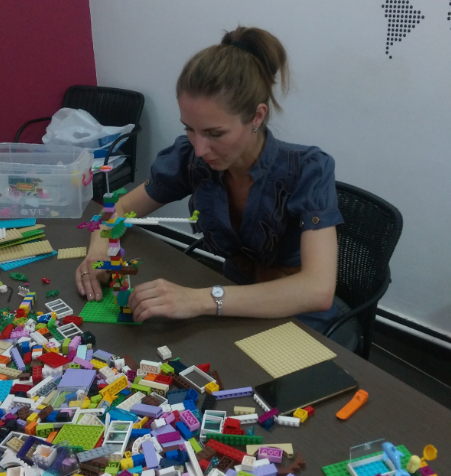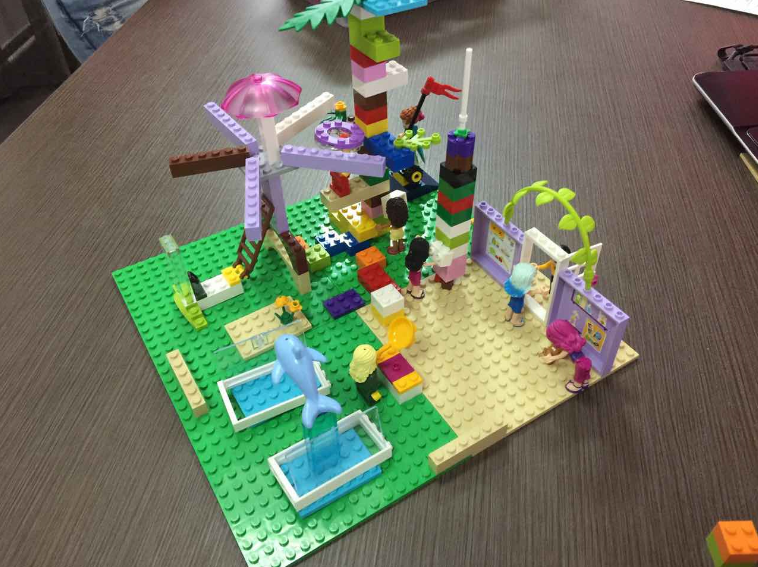Lego Serious Play Technique: How to Formulate and Use Team Values Using a Child Designer
Staying in a comfort zone leads to problems
Once, when I was holding cards for planning-poker with 5 SCRUM values in my hands, I realized that certain values in our team were “sinking”. Although in the team we profess them.
- Sometimes we stop hearing the customer, do not dive enough into the task and do not try to solve the customer’s problem at a deep level. This is due to the fact that we have been working in the area of our responsibility for a long time. And the focus of our attention is gradually narrowing to the circle of our immediate tasks. We simply stop paying attention to the problems of people around us.
- Due to the problem identified by paragraph above, team members can sometimes allow themselves to respond sharply to colleagues if they cannot understand something for a long time. This attitude does not stimulate openness, the next time a person is better off spending a few extra hours than asking for help again.
- Long work in the same zone of responsibility leads to stereotyped thinking. Sometimes we solve problems along the “knurled” path due to the fear of leaving the comfort zone, encountering something new and even banal laziness to investigate the issue more deeply.
- Individual team members are not sufficiently open to knowledge sharing due to introverted character.
As a result, we spend more time on tasks, sometimes there are problems with architecture due to superficial studies or because someone did not share knowledge.
The main reason is that the team and I have been together for 3-4 years. On the one hand, this allows us to write code in one style, build the application architecture in one style, which significantly reduces the time spent on project maintenance. And on the other hand, such a “blurred” view does not contribute to open and respectful relations with customers and with each other. It's time to "shake oneself."
What is the point the team puts in SCRUM values
- Courage. The courage to make decisions. The courage to take responsibility for the achievement of goals. The courage to introduce new technologies. The courage to accept possible mistakes and work on their elimination.
- Focus. In the sprint process, the team focuses on certain tasks. It is the focus that allows you to fulfill the sprint goals on time.
- Devotion. Team members are dedicated to the common cause, to each other. And it is loyalty that allows you to make commitments and feel responsible, to do business with enthusiasm and interest.
- Respect. We respect each other and the differences between us. We respect a different opinion, because pluralism of opinions allows us to find the best solution. It is the differences between us that allow us to build a complementary team. We respect the fact that each member of the team may not know something and are ready to fill the knowledge gap, because in the end the whole team benefits from this.
- Openness. Information inside and outside the team is open. And everyone has access to it. Openness allows you to make timely adjustments to the actions of the team. We are open to new knowledge and new opinion. We are open to criticism, because thanks to criticism we can become better.
To improve the situation, we decided to hold another mitap and collectively recall what unites us. At the same time, I used two methods: a self-determination game to identify the main values of the team and Lego Serious Play in order to understand how to use them correctly. In my opinion, we managed to solve the tasks, so I recommend the methodology for other teams.
We conduct a self-determination game to identify team values
Sound the core values of SCRUM
Courage, focus, devotion, openness and respect. Tell us what they can give the team.
Choose values important to your team
Each person can have their own understanding of SCRUM values. Moreover, completely different things that will guide him in his work may be important to him.
Therefore, it’s more correct not to impose the five SCRUM values, but to let everyone choose what is really important. I made such a list and suggested choosing the most important values that are important for everyone.

As a result, the team formulated for itself a list of 6 values (instead of 5). Each of them is important for the whole team:
- Flexibility.
- Enthusiasm.
- Openness.
- Craftsmanship.
- Respect.
- Responsibility.
Build an understanding of values with Lego models
After the game of self-determination, a logical question arose: how to use values in working with each other and other teams? To answer it, I suggested using the Lego Serious Play (LSP) technique.
The main advantage of the methodology is 100% involvement of each member of the game. LSP is not about having a great time with Lego bricks (although this goes with the process).
You come to the game with the main goal - to find a solution to the problem, and the cubes are just a tool designed to "unravel" your brain activity.
How does LSP stimulate new knowledge? A person often does not realize what he knows. Our memory and the process of extracting information from it are complex. Cubes help stimulate this process and generate new knowledge based on existing experience.
The formula for this “magic” is as follows:
Emotion controls attention> Attention controls learning> Learning controls memory.
The LSP technique involves several steps
- We state the rules of the game and the question that needs to be answered.
- We build individual lego-models and stories that clearly demonstrate complex and abstract concepts. In our case, team values and their practical application.
- Introducing models and stories to the team.
- Create a landscape, i.e. we place individual models in a common space.
- We create connections between models.
- We are building a common whole system.
- We play non-standard situations and decisions.
- Reflect and extract simple guidelines.
LSP Basic Rules
- Everyone gets the same sets of Lego blocks.
- An individual model should reflect your personal understanding of the question posed.
- Cubes should be used as a metaphor, and not as a tool for real world display.
- If you don’t know what to build, just start building. Trust your hands.
- The individual model belongs to the person who built it, no one can move the details without the consent of the owner. Make sure that the changes do not change the meaning of the model.
- Discuss the model, not the person who built it.
Using magic on the mitap
At our meeting, I decided to step back from the first rule and not limit the tools. Poured out a box of Lego blocks and additional figures on the table. Again she asked the rally participants the question: “How to use the chosen values in our work?”
Four participants took about 15 minutes to build models. Then each presented his own model and answered his colleagues' questions: what does this or that part mean? What is the meaning of it? Why are the parts arranged this way and not otherwise?

These discussions helped to understand what meaning each of us puts into team values, how he sees their use within the team. And the leader was able to more deeply understand how each participant lives, what problems he cares about, what prevents him from moving on.
Then the very magic of LSP began - combining individual models into one common with analysis and establishing relationships. At first, it was difficult for us to turn individual models into one system. The discussion and analysis of each element of the models helped a lot. We managed to understand which elements are important for the authors and which can be easily removed.
The key value of the process is that each participant was able to “rise” above his individual model and see the big picture: how his model becomes part of the system, what it affects, how the system is transformed depending on the constituent elements. As a result, there was an understanding in the head of each team member how his value system affects everyone else. At the same time, everything happened in the relaxed atmosphere of the game with the designer, from which all participants received a lot of pleasure.

By the same principle, you can discuss the “antivalues” of your team. This will help to understand which patterns of behavior are not acceptable and why. In a normal conversation on this topic, it is easy to hurt the interlocutor and not solve the problem, and the LSP technique helps to make this more delicate and efficient. Participants in the game abstract from the identity of colleagues and discuss models from Lego blocks. As a result, everyone gets the opportunity to look at the problem from the side and understand someone else's point of view.
